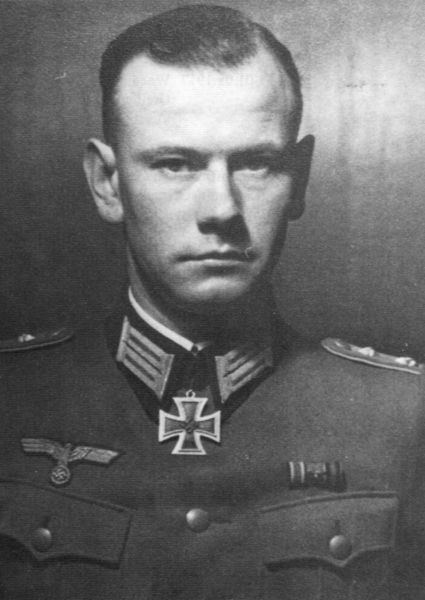Name Heinrich Borgmann Years of service 1932–45 | Service/branch German Army Unit Infanterie-Regiment 46 | |
 | ||
Commands held Volksgrenadier-Division "Scharnhorst" Place of burial Waldfriedhof Dahlem, Berlin, Germany Similar People Richard von Weizsacker, Horst Buchholz, Gottfried Benn, Werner Eisbrenner, Ulrich Wilhelm Graf Sch | ||
Colonel Heinrich Borgmann (15 August 1912 – 5 April 1945) was a German Army officer who served in the Wehrmacht during World War II.
Contents
Biography
He is notable for being awarded the Knight's Cross of the Iron Cross with Oak Leaves and for being seriously injured by the 20 July plot bomb planted by Colonel Claus von Stauffenberg at the Wolf's Lair headquarters in Rastenburg, East Prussia.
He joined the infantry in 1932 and by the outbreak of World War II was a Hauptmann. He took part in the invasions of Poland in 1939 and France and he was awarded the Knights Cross of the Iron Cross (Ritterkreuz des Eisernen Kreuzes) for his role in the latter campaign on 19 July 1940. Borgmann was then posted to Eastern Front and was awarded the Oak Leaves to the Knight's Cross of the Iron Cross on 11 February 1942 when serving with Infanterie-Regiment 46. He was promoted to major and appointed to the Army Staff at Adolf Hitler's headquarters as an adjutant in October 1943 and was then promoted to Oberstleutnant.
On 20 July 1944 he was standing at the end of the conference table close to von Stauffenberg's briefcase bomb. Generalmajor Rudolf Schmundt and Oberstleutnant Heinz Brandt who were standing to his left and stenographer Heinich Berger to his right were all killed by the explosion, but Borgmann survived with serious injuries. After recovering he was posted to an infantry division as an Oberst. He was appointed commander of the Volksgrenadier-Division "Scharnhorst". Borgmann was killed during a low level air attack on his staff car in April 1945.
